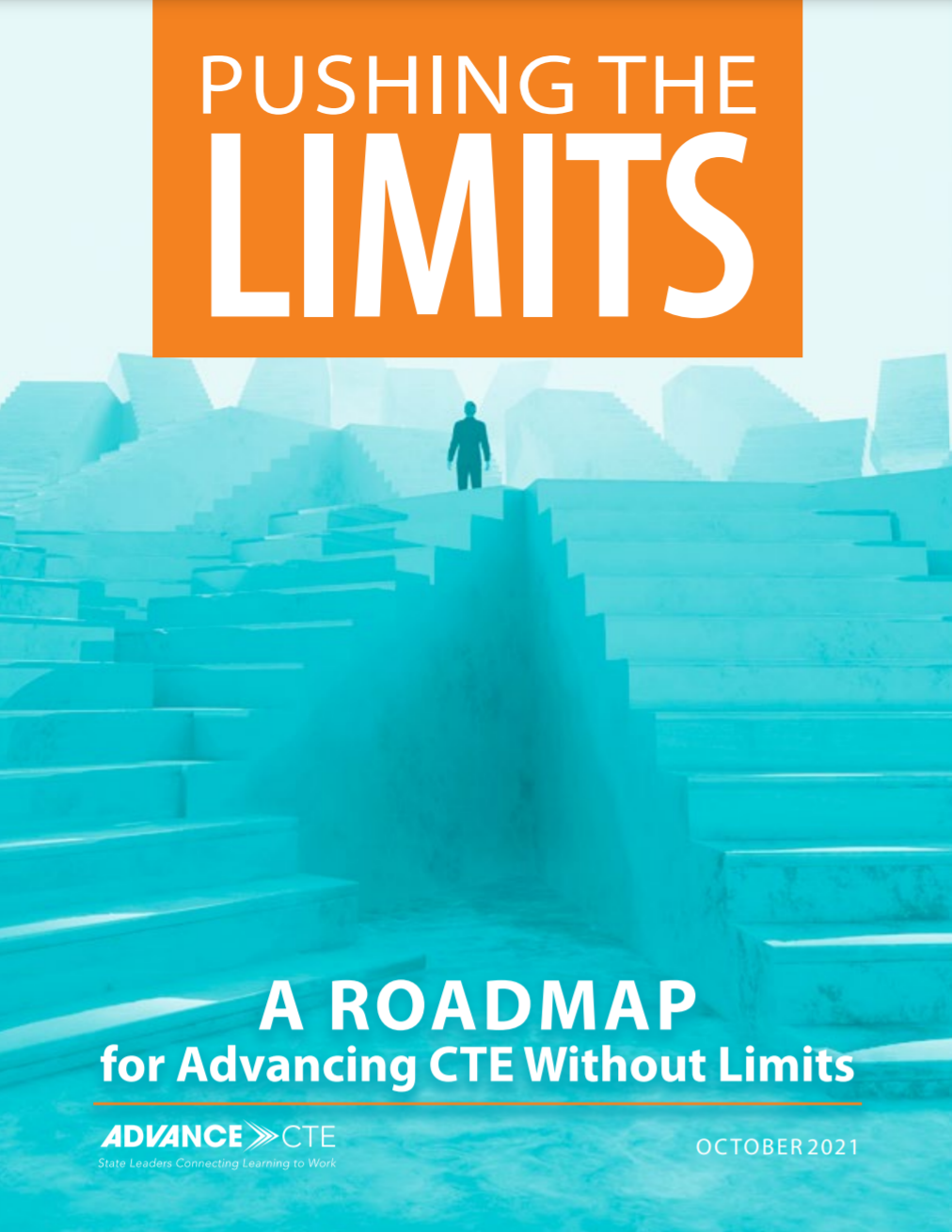 Today, Advance CTE released its primary implementation tool and Request for Proposals (RFP) to support states in transitioning from the education and awareness phases of the past six months to evaluation and implementation phases of Without Limits: A Shared Vision for the Future of Career Technical Education (CTE Without Limits).
Today, Advance CTE released its primary implementation tool and Request for Proposals (RFP) to support states in transitioning from the education and awareness phases of the past six months to evaluation and implementation phases of Without Limits: A Shared Vision for the Future of Career Technical Education (CTE Without Limits).
Pushing the Limits: A Roadmap for Advancing CTE Without Limits is a step-by-step guide to help states conduct an initial alignment test of current policies and practice with vision principles, identify top areas for action, and develop an action plan of near and long-term implementation strategies for one or multiple vision principles.
The States Advancing CTE Without Limits RFP allows states to be early leaders in deeper implementation work of 1-2 vision principles and related actions through funding, intensive technical support, and a community of practice with other state teams.
The following Q&A with Executive Deputy Director Kate Kreamer provides guidance on how states of all capacities can leverage the roadmap and RFP opportunity to make meaningful first steps towards implementation.
Let’s explore the roadmap, which is going to be a useful tool for states for years to come as they work to realize CTE Without Limits. What was the idea behind the roadmap design, and how is it tailored for use by any state?
CTE Without Limits is intentionally ambitious, and we knew it may be difficult for states to determine the best place to start in transforming their systems. We listened to Advance CTE’s Board of Directors and our vision kitchen cabinet of thirteen state leaders committed to bringing the vision to life – they asked for a step-by-step process to evaluate their current systems against the vision, as well as an action plan down to the month and week as a manageable means to carry out the work. We heard loud and clear that our members wanted a “roadmap” to help them accomplish the principles and actions within the vision.
Advance CTE is proud to serve all 50 states, DC and territories. The roadmap is designed to meet states at their capacity. For example, states can choose to tackle just one principle or all of them. The tool is broken down by action area, which is a more manageable grain size than a principle, and allows for deeper reflections. Importantly, we kept each set of questions limited to no more than ten to allow states to work at their own pace and collaborate without getting too overwhelmed. Additionally, we combined scoring with the qualitative evaluations to make it easier for states to identify the most urgent and/or achievable areas for action.
At first glance, the roadmap can seem a little overwhelming. What are some easy first steps that state leaders can take to prepare to conduct the self-assessment in this tool?
I want to be candid that the roadmap is just the first step of what will be a long road towards implementation for both states and the more than 40 vision partners. This roadmap is meant to be returned to and used in multiple ways over time.
That being said, one of the easiest steps states can take is to conduct partner mapping. Who do they need to have at the table to conduct a complete, honest assessment of systems through this roadmap?
Next, states can determine how this roadmap connects to pre-existing evaluation checkpoints. Use those checkpoints to create a schedule where pieces of the roadmap can be incorporated into existing meetings about a state vision, strategic plan, Strengthening Career and Technical Education for the 21st Century Act (Perkins V) planning, etc.
Finally, we understand that most states will address one or two principles at a time, not all five – or even just some of the highest impact actions within the vision. Advance CTE’s CTE Without Limits State Capacity Tool is part of our grant application for vision implementation assistance, but it is also a great first step for any state whether or not they apply to quickly determine which principles are most attainable and which principles require the most urgent action.
Speaking of the grant application, let’s discuss States Advancing CTE Without Limits, which is an opportunity for states to apply for more direct and intensive vision support. What is the time commitment and expectation for states in the cohort?
This RFP is open to any state and is intended to provide a dedicated, collaborative space to receive intensive vision through a cohort of up to five states. I’m really excited about this cohort because they will be the early adopters and national models for vision success with a lot of lessons learned along the way.
The grant is a significant time commitment – work must be completed between December 2021 and October 2022, but it is designed to empower the state to continue the work for years to come. States must provide a single point of contact for the project who is expected to attend monthly and bi-monthly calls. Collaboration is also a key focus of this grant – we expect states to not only develop a cross-sector team within their state for this work, but also be active participants in cross-state spaces to ensure the models developed from this work can be utilized by all members.
I want to emphasize that states are not expected to conduct implementation activities for all five principles. Part of the application process is using the capacity tool to determine one to two principles and the related actions that will be the focus of the project during the grant period.
Can you give a little more detail about the supports participating states will receive?
We know states struggle with capacity building across all facets of systems transformation, so this grant focuses on providing intense, individualized support while also facilitating broader knowledge-building across all five vision principles through the cross-state community of practice.
Selected states will receive funding up to $25,000; a dedicated coach with monthly check-ins and intensive technical assistance; one in-state or virtual visit; dedicated spaces to connect with other states in the cohort and complete the vision roadmap; and opportunities for national recognition and presentations to share the work with members and stakeholders. Visit the vision webpage to access the roadmap, RFP application, and additional vision education and implementation tools. The deadline for states to apply for States Advancing CTE Without Limits is November 9, 2021 at 5:00PM ET.
Stacy Whitehouse, Senior Associate Communications and State Engagement


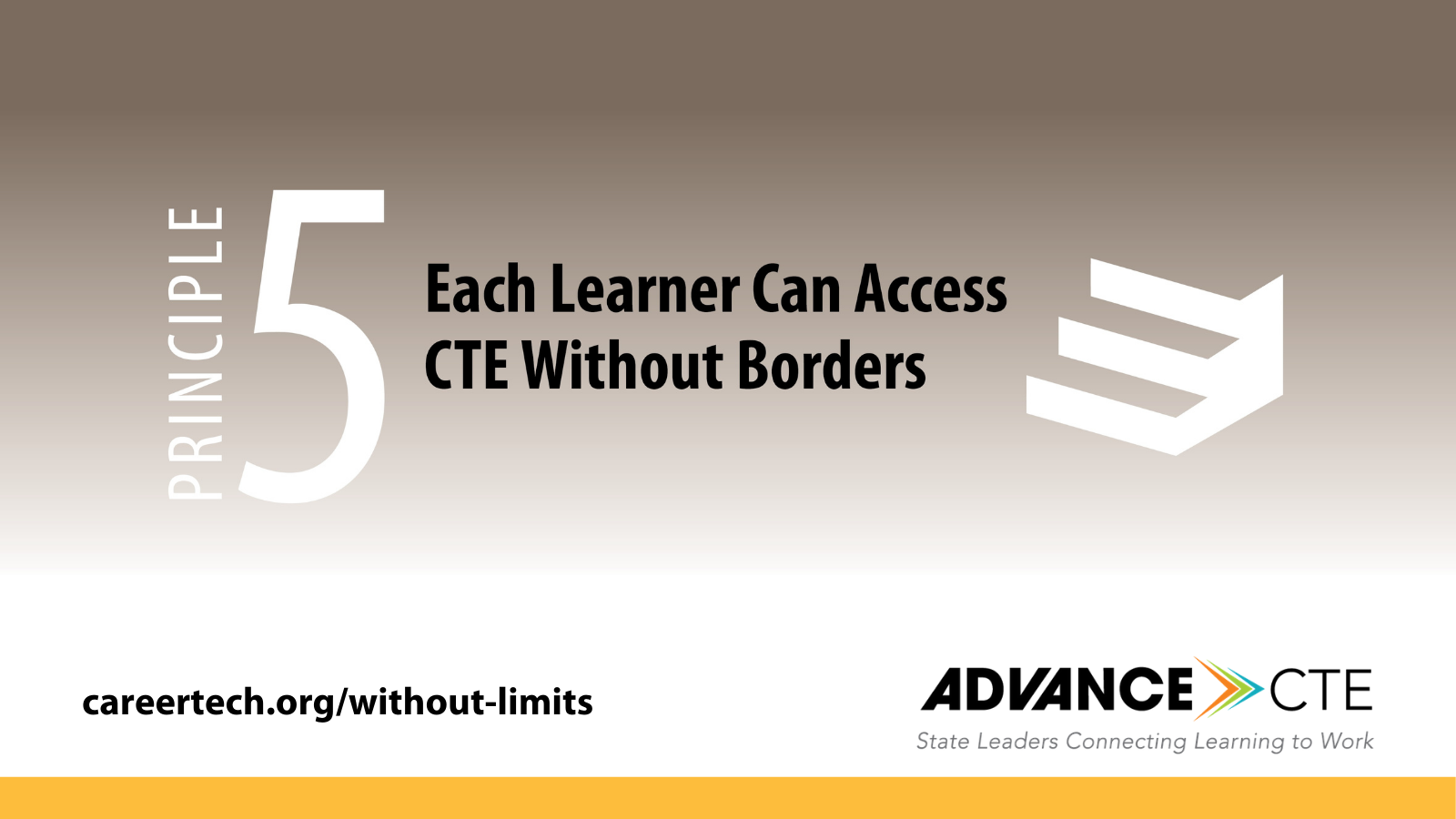

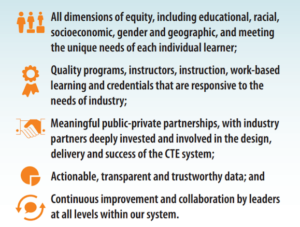
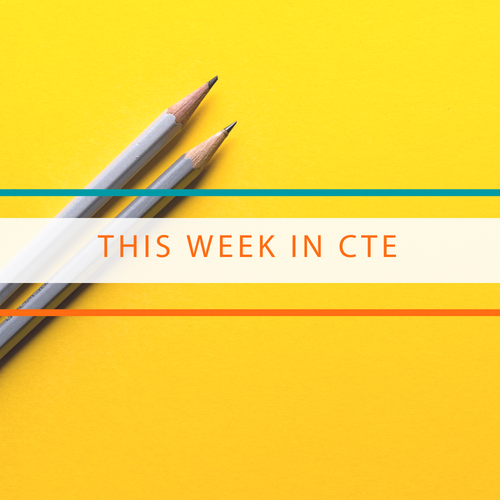 Developed with input from nearly 200 national, state and local education and workforce development leaders and supported by over 40 national organizations,
Developed with input from nearly 200 national, state and local education and workforce development leaders and supported by over 40 national organizations, 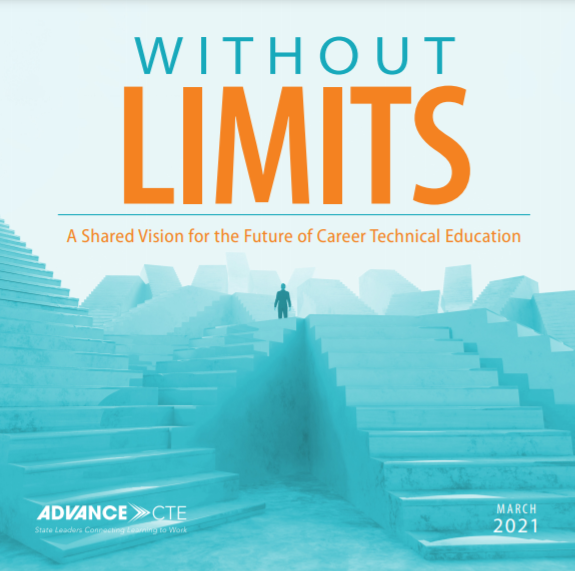 Today, Advance CTE released a
Today, Advance CTE released a